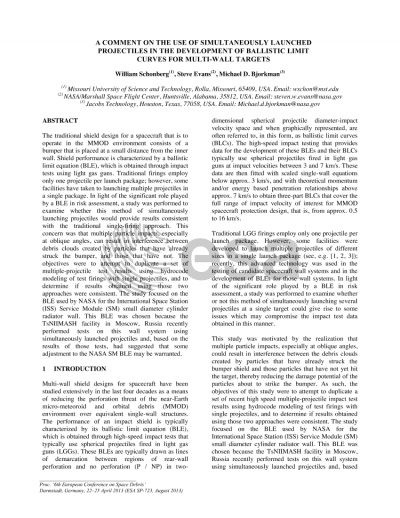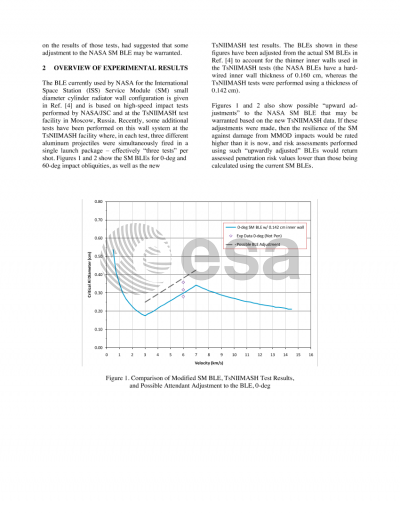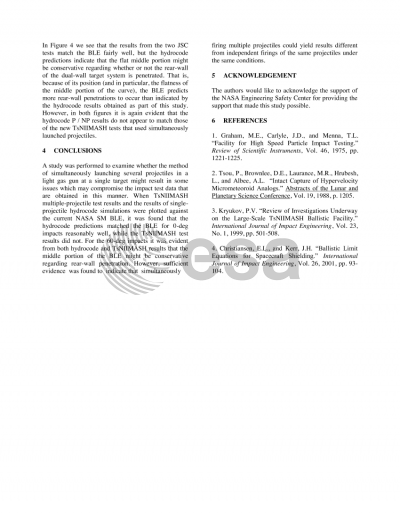Document details

Abstract
The traditional shield design for a spacecraft that is to operate in the MMOD environment consists of a bumper that is placed at a small distance from the inner wall. Shield performance is characterized by a ballistic limit equation (BLE), which is obtained through impact tests using light gas guns. Traditional firings employ only one projectile per launch package; however, some facilities have taken to launching multiple projectiles in a single package. In light of the significant role played by a BLE in risk assessment, a study was performed to examine whether this method of simultaneously launching projectiles would provide results consistent with the traditional single-firing approach. This concern was that multiple particle impacts, especially at oblique angles, can result in interference between debris clouds created by particles that have already struck the bumper, and those that have not. The objectives were to attempt to duplicate a set of multiple-projectile test results using hydrocode modeling of test firings with single projectiles, and to determine if results obtained using those two approaches were consistent. The study focused on the BLE used by NASA for the International Space Station (ISS) Service Module (SM) small diameter cylinder radiator wall. This BLE was chosen because the TsNIIMASH facility in Moscow, Russia recently performed tests on this wall system using simultaneously launched projectiles and, based on the results of those tests, had suggested that some adjustment to the NASA SM BLE may be warranted.
Preview






